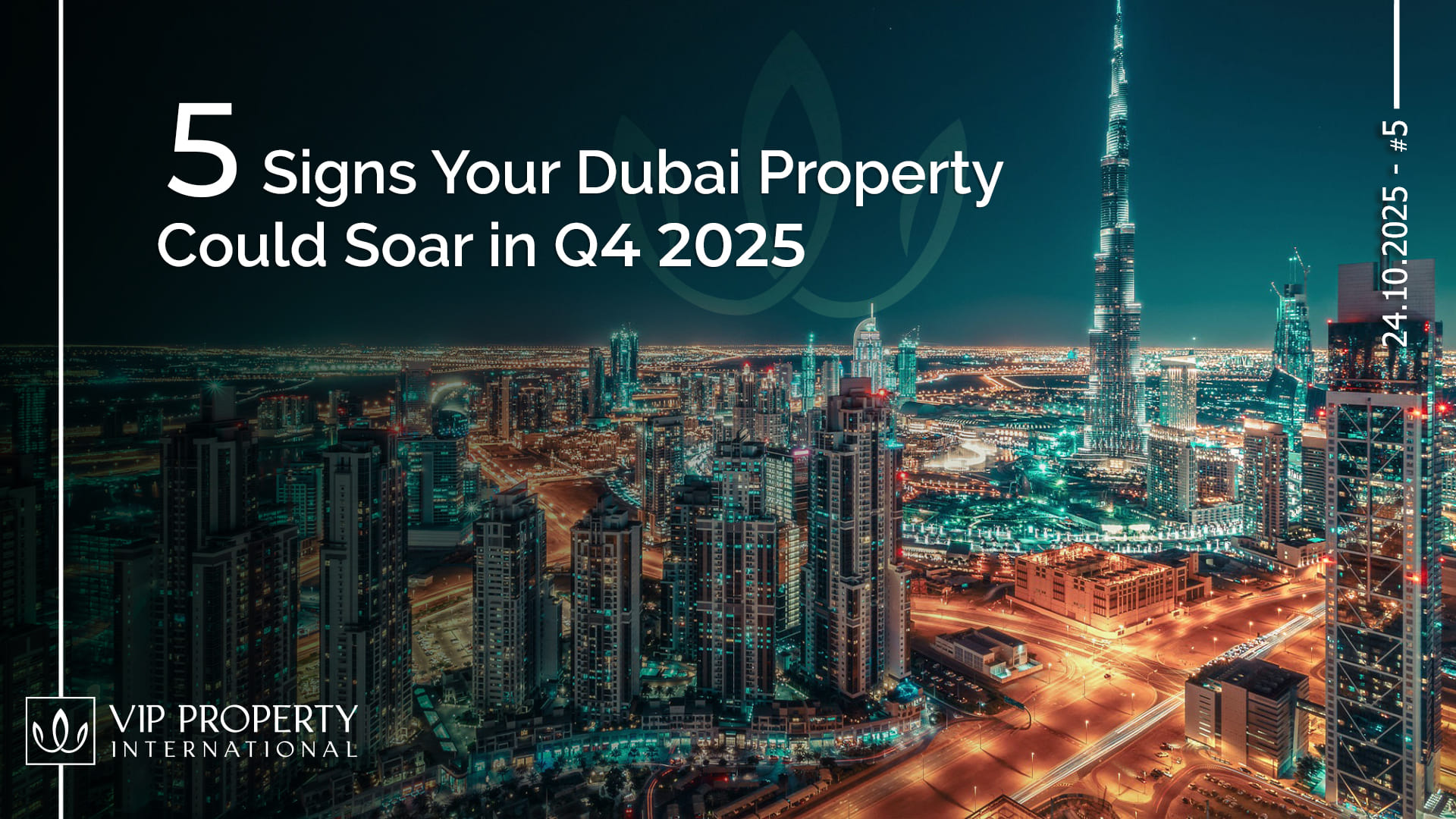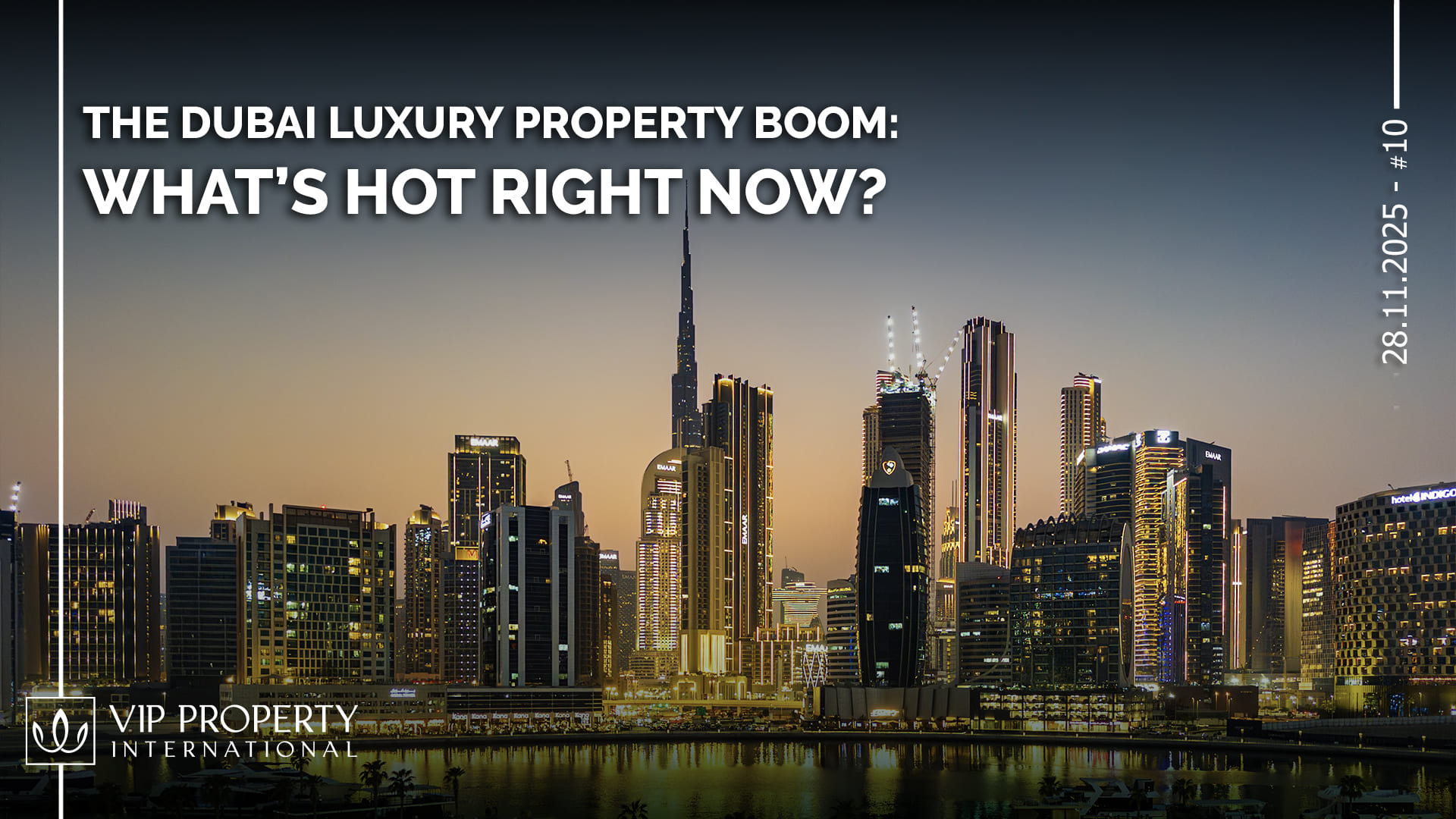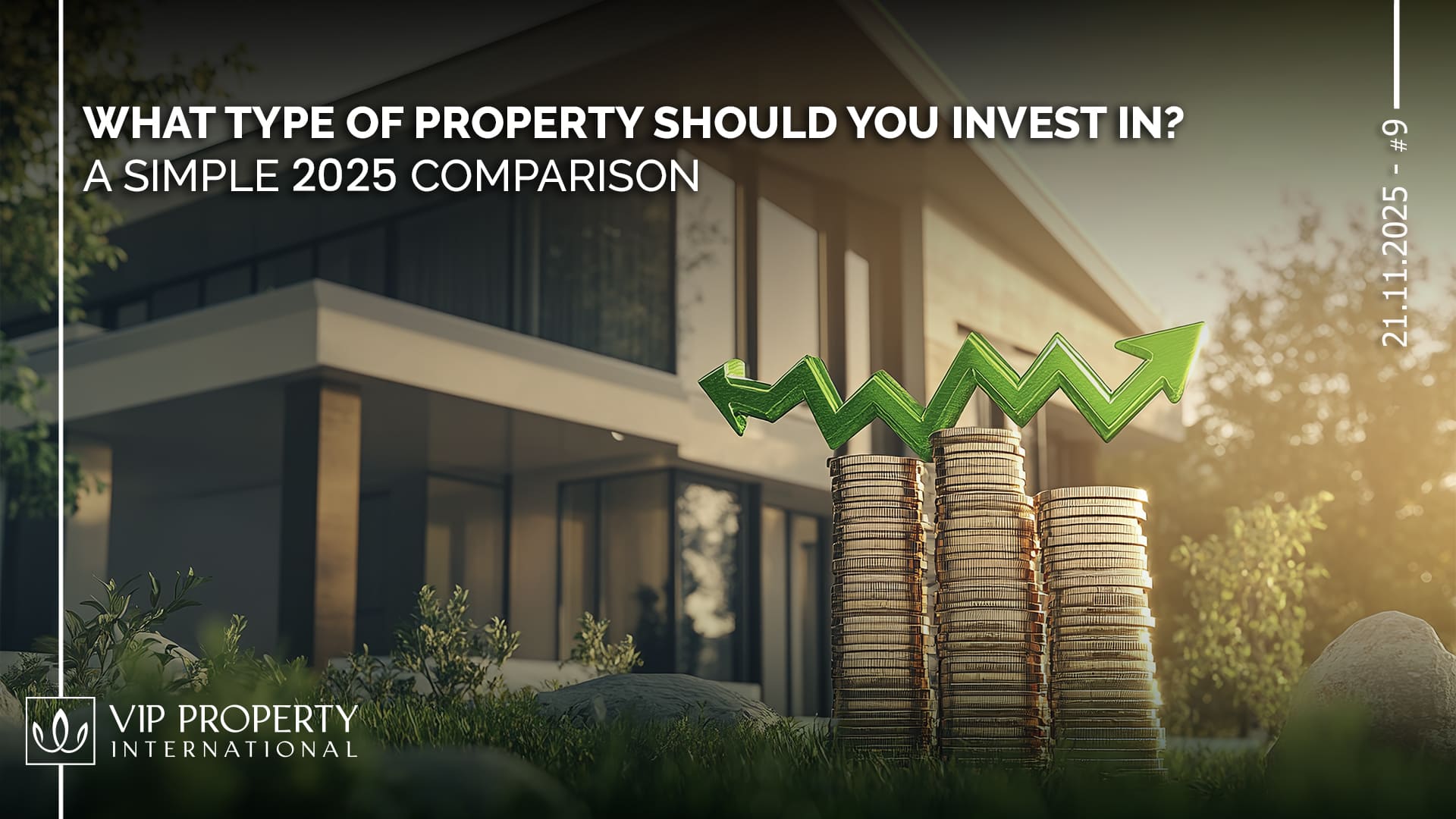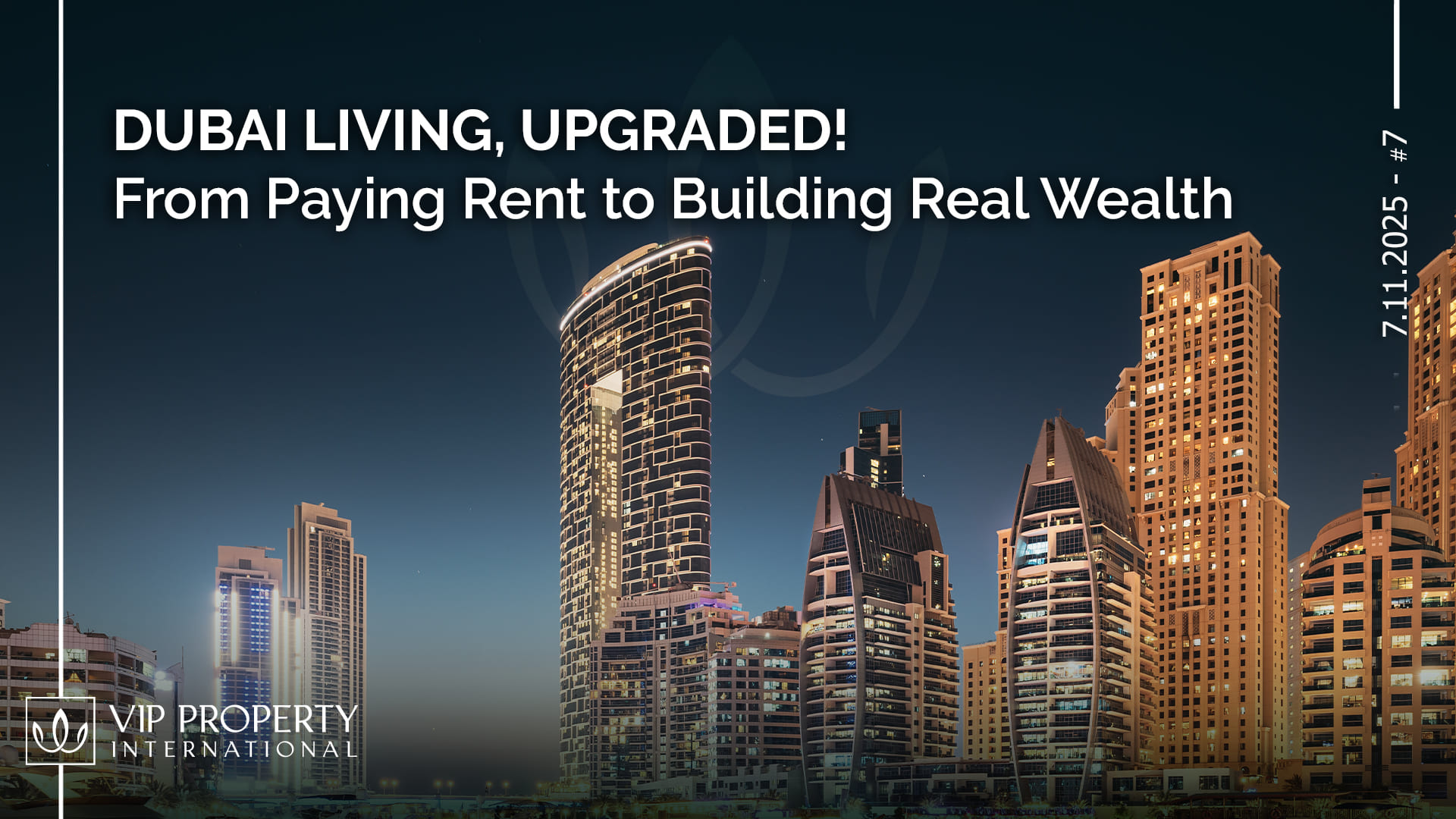Dubai’s real estate market is entering a new phase: data-driven, opportunity-rich, and strategically focused. Between 2021 and 2025, property prices rose more than 60%, but the next wave of growth will favor areas that align with infrastructure, scarcity, and lifestyle demand.
Here are 5 indicators your Dubai property could see strong appreciation this quarter:
-
Waterfront locations — limited supply and strong global demand.
-
Growth corridors — areas near Expo City and Al Maktoum Airport.
-
Master-planned communities — stability and quality build trust.
-
Villas and townhouses — family-oriented demand in an undersupplied market.
-
Central districts — iconic addresses consistently outperform.
Savvy investors focus on fundamentals rather than hype. Dubai’s Q4 2025 market rewards strategy: properties supported by prime location, quality construction, and long-term vision are likely to lead the next growth phase.
Discover if your property is positioned to be one of Dubai’s next success stories. Connect with our experts and access exclusive investment insights at vipproperty.com.
Dubai’s real estate market has evolved into a more mature, data-driven arena. Between 2021 and mid-2025, property prices surged by 60–75% across the city.
According to the ValuStrat Residential Price Index, Q2 2025 posted a 23.9% year-on-year increase, with the overall index reaching 220.8, benchmarked to Q1 2021. Growth has cooled since the frenzy of 2022–23: Q1 2025 still delivered a 2.8% quarterly and 15.8% annual price gain.
By mid-2025, transaction volumes remained extraordinary, total 2024 sales reached AED 761 billion (up 36%), and May 2025 alone recorded AED 55.2 billion in deals.
However, the supply pipeline is significant: around 210,000 new residential units are expected for delivery by late 2025–26. Analysts at Fitch Ratings forecast a possible 10–15% short-term correction as this new supply enters the market.
Even so, Dubai remains one of the world’s most resilient investment hubs. To outperform in this maturing cycle, focus on the five key indicators that continue to drive exceptional property value growth.
1. Waterfront Locations: Scarcity Still Reigns
Premium waterfront zones continue to dominate appreciation charts. Since 2021, villas on Palm Jumeirah, Jumeirah Islands, and Arabian Ranches have soared over 140%, while apartments citywide climbed roughly 73%.
Why? Coastal land is limited and demand for beachfront living remains global. This scarcity supports long-term price stability.
Emerging waterfront areas such as Dubai Maritime City, Dubai Islands, and Mina Rashid are becoming the new frontiers of opportunity.
Luxury coastal sales remain red-hot: Palm Jumeirah alone accounted for 34% of all prime transactions above AED 10 million in Q3. Even as the wider market steadies, ultra-prime waterfront demand stays resilient and internationally fueled.
2. Development Hubs: Follow Government Growth Corridors
Dubai’s Seventh Urban Master Plan prioritizes southern expansion especially around Dubai South, Expo City, and the Al Maktoum International Airport corridor.
Properties in these infrastructure-rich areas benefit directly from new schools, roads, metro extensions, and public facilities. They also attract developers aligned with long-term government vision.
Growth is stabilizing but not slowing. Analysts project up to 10% further price increases by year-end 2025, driven by solid fundamentals rather than speculation.
Projects near major infrastructure upgrades continue to appreciate faster than the city average a clear signal of sustainable value creation.
3. Master-Planned Communities: Cohesion Protects Value
Invest in communities where a single developer controls infrastructure, phasing, and design consistency.
In Q1 2025, off-plan transactions represented 32.4% of all sales, worth AED 77 billion. Developers such as Emaar, Nakheel, and Meraas are pacing deliveries strategically to avoid oversupply.
In contrast, fragmented districts like Jumeirah Village Circle (JVC) with dozens of smaller builders suffer from inconsistent quality and uneven long-term maintenance.
Master-planned and branded communities attract buyers seeking trust, cohesion, and capital stability, making them far more resilient to market fluctuations.
4. Townhouses & Villas: Undersupplied, Family-Driven, and Rising
Apartments still make up about 83% of Dubai’s total housing stock, yet buyer demand has shifted strongly toward villas and townhouses, which represent just 17%. In 2024, these segments recorded 20% annual price growth, far exceeding apartment gains. Villa rents rose 5.7% YoY in May 2025, showing strong family and long-term resident demand.
The trend has intensified average villa prices now exceed AED 5 million, reflecting a 32.2% year-on-year rise. Luxury villas and townhouses remain Dubai’s most supply-constrained assets, offering both high yields and appreciation potential, especially within gated or branded communities.
5. Central & Iconic Districts: Scarcity Equals Stability
Areas such as Downtown Dubai, Business Bay, Dubai Marina, and Jumeirah remain global landmarks with limited land and unmatched prestige.
In Q2 2025:
-
Prime apartments rose 19.1% YoY
-
Prime villas surged 28.7% YoY
-
Prime rents increased 6.2%
These central zones continue outperforming the market average. 103 ultra-prime homes (USD 10 million +) sold in Q3 2025 a 24% increase from Q3 2024. In a maturing cycle, brand, address, and scarcity preserve value better than new peripheral projects.
Market Overview: What Q4 2025 Confirms
-
Momentum + Moderation: Dubai’s growth remains positive, but gains are now more selective powered by fundamentals, not speculation.
-
Luxury Resilience: The high-end villa and branded residence segment continues attracting global capital.
-
Rental Strength: Family homes and long-term leases maintain strong yield performance.
-
Supply Pressure: With over 200,000 units in the pipeline through 2027, analysts expect mild corrections in oversupplied areas.
-
Differentiation Is Everything: Projects that stand out in design, location, or brand will continue outperforming.
-
Summary Table
|
Investment Focus |
Why It Matters in 2025 |
|
Waterfront Scarcity |
Limited land, enduring prestige, long-term value |
|
Government Growth Corridors |
Infrastructure-driven appreciation |
|
Master-Planned Communities |
Controlled supply and trusted delivery |
|
Villas & Townhouses |
Undersupplied, high family demand |
|
Central & Iconic Districts |
Scarcity and global brand appeal |
Final Thoughts
The easy-profit phase is over the strategic-growth era has begun. Dubai’s real estate remains one of the world’s most dynamic investment markets, offering long-term upside for investors who focus on scarcity, infrastructure, quality, and location.
If you’d like customized insights on off-plan or secondary investments aligned with these five key fundamentals, we can provide developer performance data, community comparisons, and launch timing all synchronized with the Q4 2025 market landscape.
Ready to see if your property is one of Dubai’s next success stories?
Connect with our experts and access exclusive investment insights at vipproperty.com
Sources
-
ValuStrat Q2 2025 Residential Price Index
-
Property Monitor Q1 2025 & DPI Data
-
Global Property Guide May 2025 Rental Index
-
Fitch Ratings Market Outlook (May 2025)
-
Arabian Business Q3 2025 Prime Sales Report
-
Chestertons MENA Q3 2025 Market Trends
-
Dacha Real Estate Q3 2025 Market Update
-
Cushman & Wakefield 2024-25 Annual Review







 (1).jpg_1761906243.jpg)